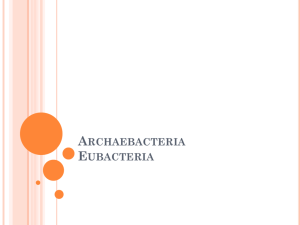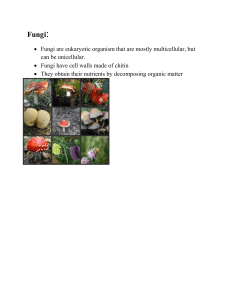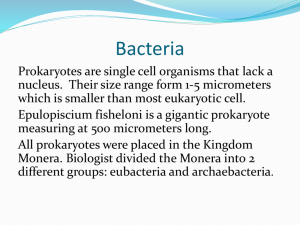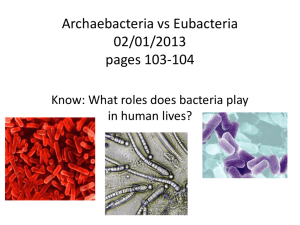Bacteria: Archaebacteria Eubacteria
advertisement
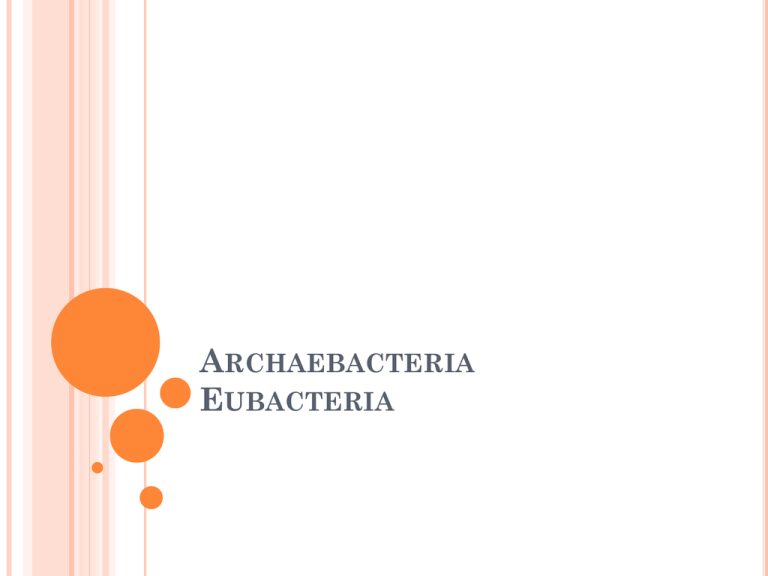
ARCHAEBACTERIA EUBACTERIA ARCHAEBACTERIA Major Characteristics Generally only live in very harsh environments, such as those w/o O2—also known as extremophiles because they can survive pressures over 200 atm Microscopic: diameters between 0.0002-0.0004 inches Cell Type: prokaryotes (DNA not enclosed in nuclei) Cell Structure: similar to bacteria but different chemical composition in cell wall & cell membrane, few internal organelles Body Plan: unicellular ARCHAEBACTERIA Metabolism: autotroph or heterotroph Reproduction: asexual (binary fission) 4 major Phyla: Crenarchaeotes: live in hottest, most acidic environments Kararchaeotes: newly discovered in Yellowstone, may be least-evolved lineages of modern life Nanoarchaeotes: one species exists, relatively unknown, smallest genome of any organism Euryarchaeotes: very diverse group ARCHAEBACTERIA Some live in environments that are so harsh pressures reach 1 ton/cm2 EUBACTERIA Major Characteristics Differ from archaebacteria by chemical composition Are vital in recycling nutrients Grow in all environments, from guts of animals to soil and radioactive waste Cell Type: prokaryotes Cell Structure: variety of cell shapes: sperical, rodlike, spiral; few if any internal organelles, some have external flagella Body Plan: unicellular EUBACTERIA Metabolism: autotroph or heterotroph Reproduction: asexual (binary fission) 4 major Phyla: Proteobacteria: includes E. coli and nitrogen-fixing bacteria in soil Spirochaetes: distinctive spiral shape; some cause syphilis and Lyme disease Actinobacteria: many soil bacteria belong here; some produce antiobiotics (streptomycin), some produce harmful illnesses: anthrax, tetanus, botulism; one produces a powerful insecticide used for genetic engineering in plants Cyanobacteria: photosynthetic; among oldest organisms on Earth; are key sources of C and N in the environment
